Photos and words by ambassador Jake Hood. Drawings by Ambassador Erica Kutz

I’ve always been a tinkerer. Always trying to find ways to improve things. My brain is forever thinking of ideas, running theories through my head and to be honest, I need to start writing them down because normally I forget them a day or two later. In another life I must be an engineer or something. Maybe one day I’ll go to Uni.
Just a quick disclaimer. I’m happy to be wrong at any point during this. Feel free to call me out. I’m open to other ideas as well.
Always getting back to the point. Last year I got my Process X DL. It showed up while I was on Xmas break back in my NZ home of Queenstown. When it showed I had 4 days left there before I had to fly back to Wellington.
I was so excited. It was the first time I had had a suspension bike in like 2 years, and it was the X. The bike was going to destroy everything. After ripping open the box. Building it up, swapping a few parts (just personal preference stuff) it set off up the hill. It was a pissing wet day. Not a day you’d want to ride in, but I had to. My time left in QT was limited and I wanted to test the X on trails I normally test bikes on to give me a good benchmark to see how the X stacked up.
I dropped into the trail. The bike was good. It was really flipping good. It did what I thought it was going to do. There was a few little setup things I wanted to tweak but overall, I was impressed
Over the next few days, I did a lot of riding, tweaking this and that as I went. I got the bike in a pretty good spot. It felt pretty damn good everywhere down in Queenstown but there was a little more I thought it could get out of it.
Back in Wellington, the first few weeks on the bike were good. Having never ridden a full suspension in Wellington it felt like I could do no wrong for the first few weeks. I was getting away with murder on it. Always just helping me out in those “oh shit” moments.
After a few weeks though I started to struggle with the X. I’ve found the riding in Wellington to be very unique to anywhere else I’ve ridden in the world. Trails aren’t very wide and often are benched into the side of a hill or are in a 3-foot-deep rut/channel. There are a lot of tight turns where you can’t lean the bike over due to a small young tree being right where you want to lean. There is often a lot of overgrowth on the side of the trails making it hard to see the line of sight. There are no berms or ruts to rail in sight. Flat turns everywhere. The tech is often pretty techy and janky. It’s a lot of fun but very different from everywhere else I’d ridden. You really have to think a lot when you’re riding. Due to all this, the speeds are a lot slower. (Unless your name is Jesse Cseh or Eliot Smith). It’s a big departure coming from Queenstown where it’s a lot wider and a lot faster. Turns have heaps of support and the tight ones don’t have something on the inside so you can lean the bike over. You can ride elbow out vs in Wellington where they often come in.

As my speeds were increasing on the Wellington trails I started to not gel with the X. It felt a bit cumbersome. A bit too long. Maybe too much bike. I tried to change my riding style. Tried to ride really tidy. Nail my braking spot but just struggled with it on the Wellington style trails.
Just before winter started, I got my ESD built back up. Immediately I started riding the local trails better on that bike. I could nail all the bits with ease that would feel super awkward on the X. It just seemed to be better for the tight jank. So, I started puzzling in my head. On paper these bikes are very similar in geometry numbers. Ish… ish…. obviously, there are some differences due to one being a hardtail and one being a full suspension and yes, they are quite different when the bikes are sagged. But still. How could the hardtail feel so much less awkward up here?
The rest of the winter/spring my X lay dormant. I’d robbed parts off it to build my ESD back up and lent other parts off it to mates down in Queenstown who were struggling to get parts due to shortages.
I was loving the ESD, it’s just a lot of fun to ride but in my head, I kept going back to how to make my Process better for this. The low-hanging fruit was to make it a mullet. It’s what I had wanted to do from the start when I got the bike, but I’d been given a set of 29er carbon wheels from my work to test so I never ended up setting the bike up mullet.
Quick side note. I personally think mullet bikes should be called Biggie smalls…. Just cause that’s what they are.
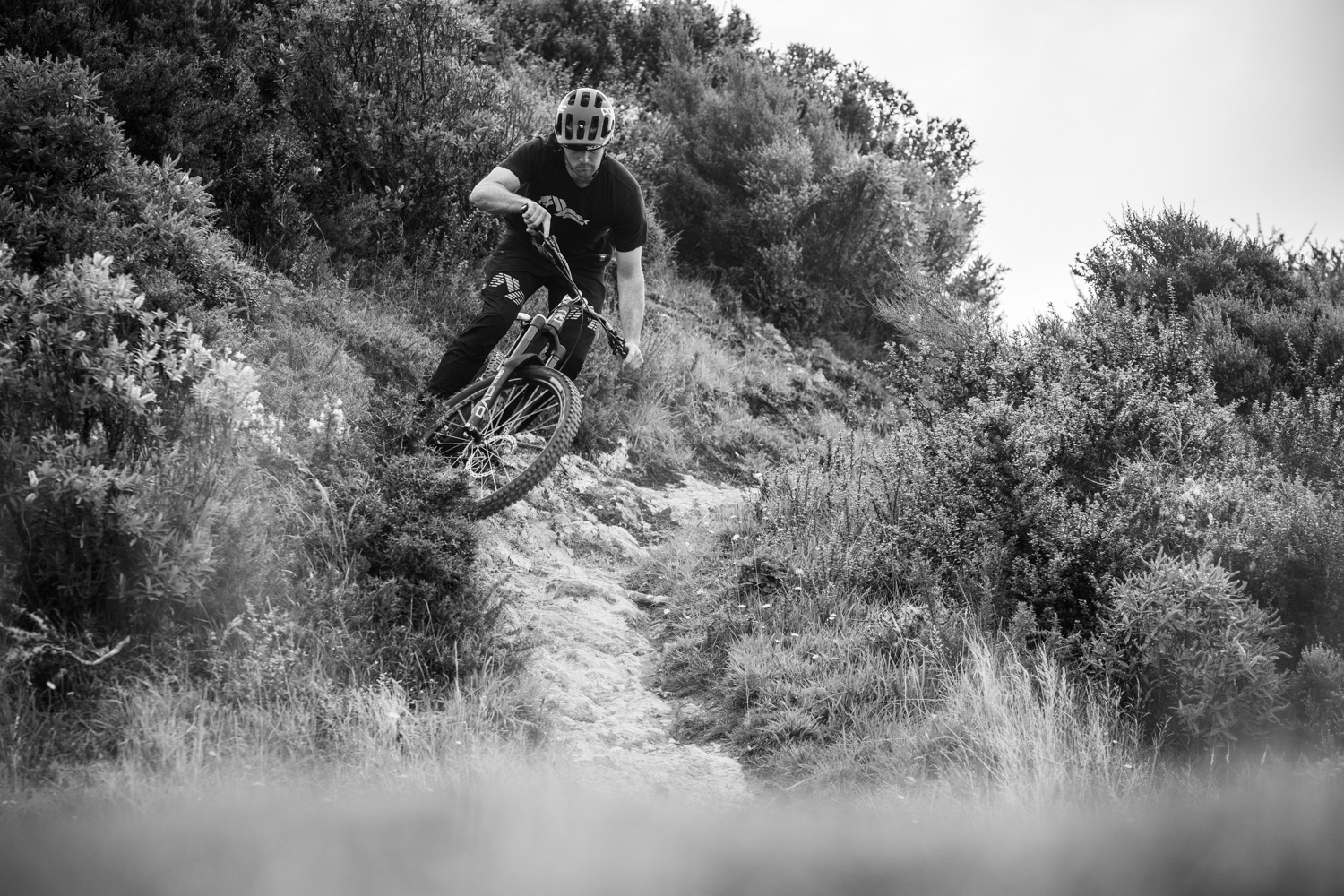
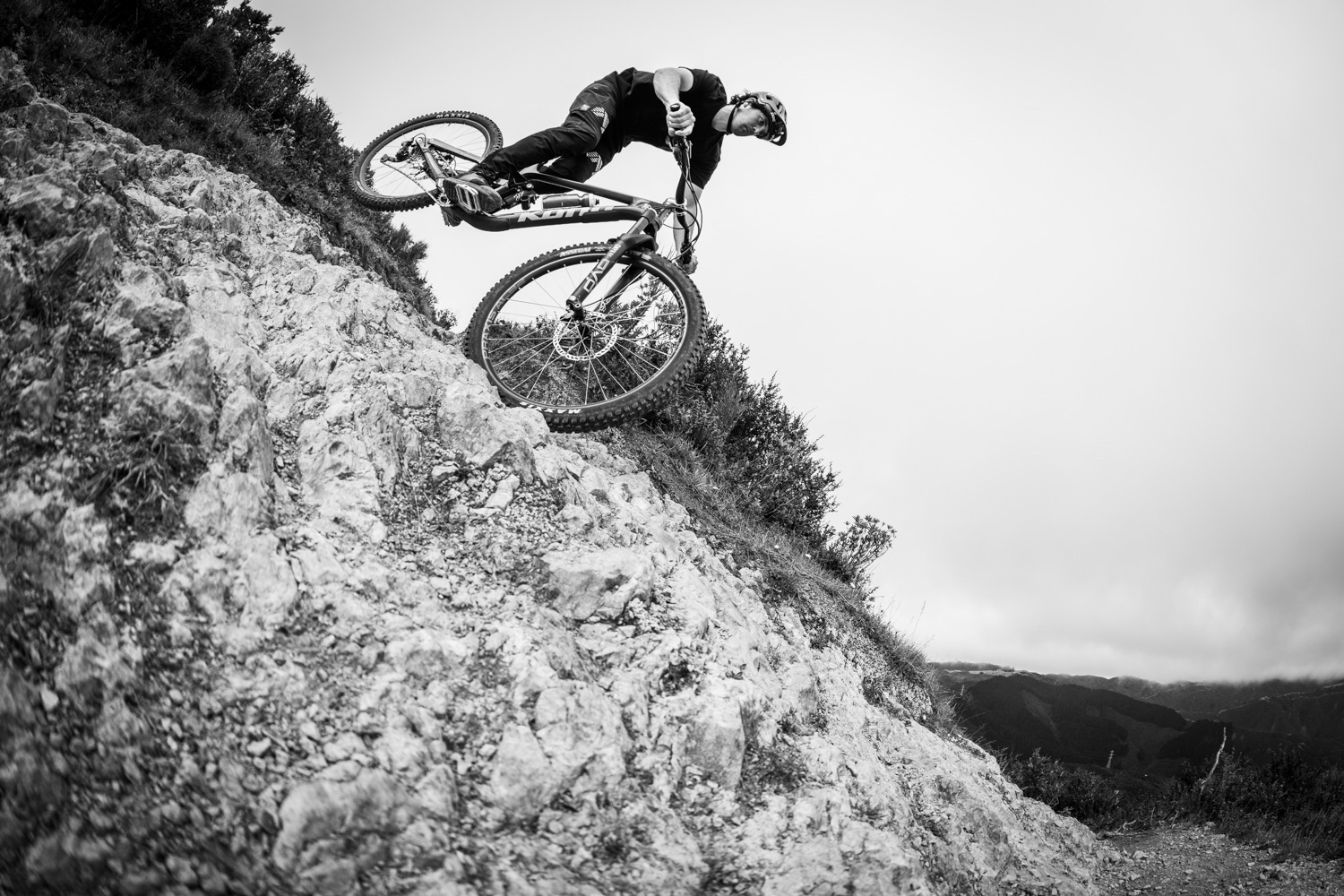
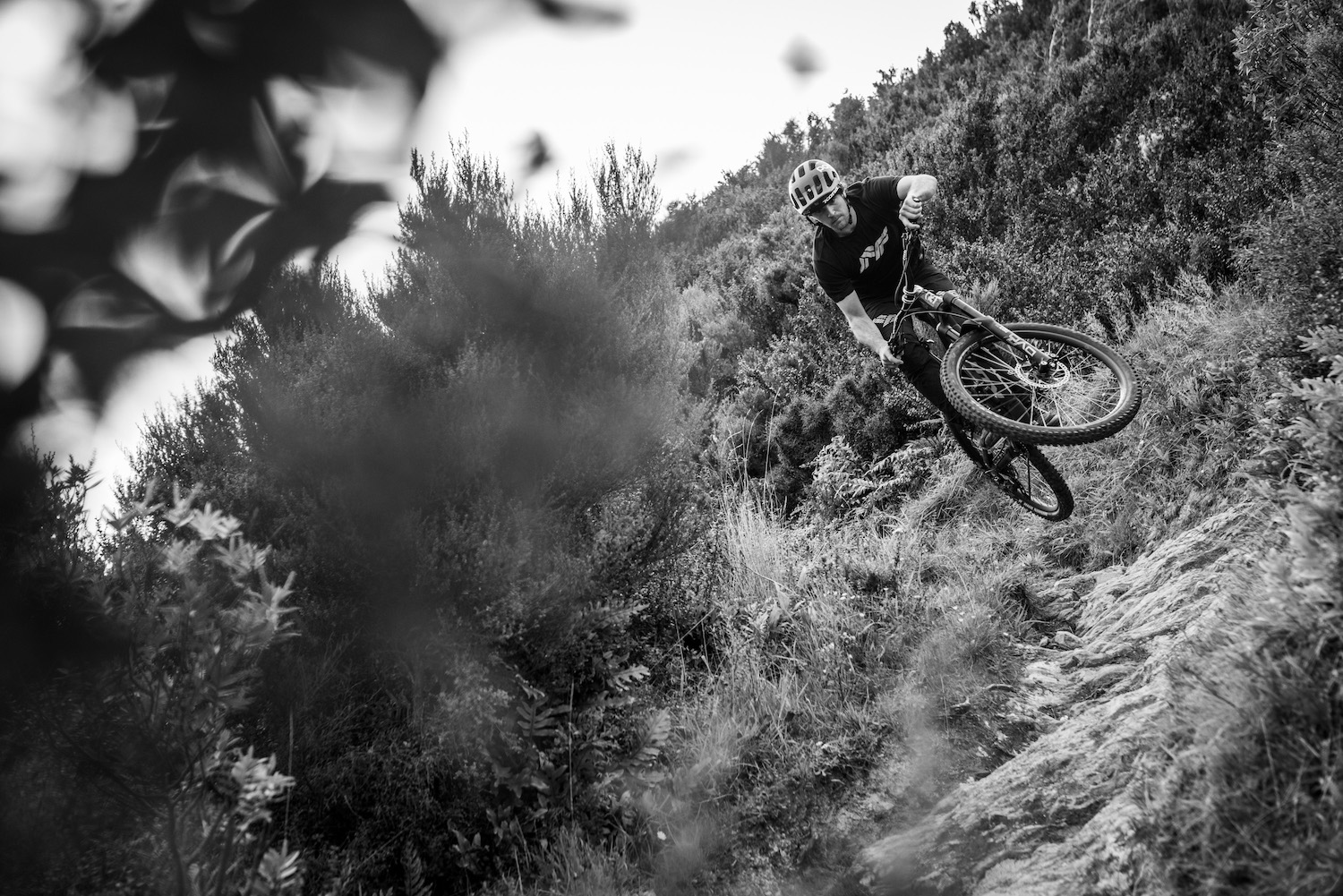
With the winter drawing to a close and Ferry to Fishy coming up I got around to rebuilding my X up. I wanted to fix all the niggles I had been struggling with. I was given a rear hub that I laced up onto a 27.5 rim. The wheel basically cost me nothing, so it was perfect for the experiment. If I didn’t like it, it wasn’t going to cost me a heap of money.
I retuned my shock, and swapped the spring out for a springdex so I could mess about with the spring rate on the fly. Personally, I’m a massive fan of that product. I also swapped the alloy front wheel off my ESD onto my X as well. I just wasn’t jiving with the carbon wheels. Too stiff. Not enough compliance to them for my liking.
Now I realize this isn’t a scientific test and a lot of variables have been changed but this is what I experienced and hopefully some science to back it up. While writing this I wish I could have remembered more from physics at high school.
I set off on my first ride with the bike set up in a biggie smalls mode. A little spin around the trails next to my house. Immediately I noticed the bike felt better to climb. This is due to the smaller rear wheel taking less torque to make the wheel rotate, Less weight, smaller diameter and so on. It almost feels like going down 2 teeth on the front chainring. Little pinches became easier to accelerate up. It just felt like I kind of had a bit more power in my legs. I spun my way up to the top and dropped into the steepest trail on the hill. A little illegal skid line that points straight down. The bike felt good. I’ve never struggled with the rear wheel of a 29er buzzing me, but the extra space of the small wheel was welcomed. It felt like I could drive the front wheel a bit more through my feet due to the higher axle difference between the front wheel and rear, (more on that later). The maneuverability seemed to increase. Overall that quick ride seems to be a good steep in the right direction for what I was looking for. Since then, I’ve put a heap of miles in on this setup. Ridden a ton of different places to see how it fairs.
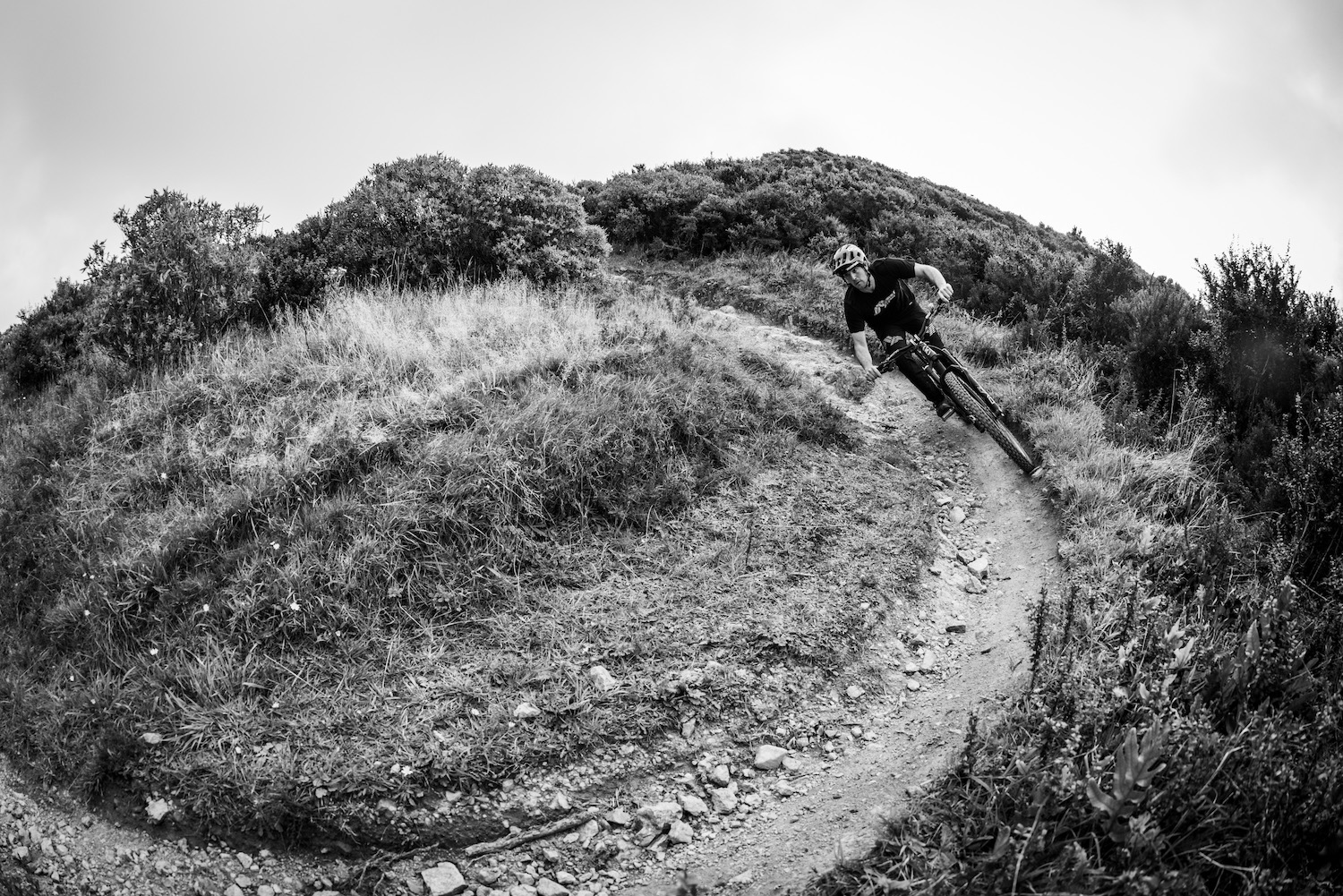
akes for a stable machine that can mob through anything. If the trail is fast, rough, and wide the bike would shine. It’s such a dream to ride, but what I was struggling with was when it was slower and more niggly. I wanted to improve the performance in this area to suit the local trails around me.
Now a bike will turn better when it’s leaned over. That’s the best way to turn. Try to turn a really tight turn when it is upright. It can be done but it’s a lot easier when you lean it over. Also, when you lean your bike over, it naturally wants to turn.
29er wheels are more stable than 27.5 due to the fact that a bigger wheel will have more gyroscopic stability than a smaller wheel. As the bigger wheel is spinning it has more tendency to stay rotating on the same plane. That property is a function of the radius squared which ties in with the moment of inertia. A 29 will be proportionally greater than a 27.5.
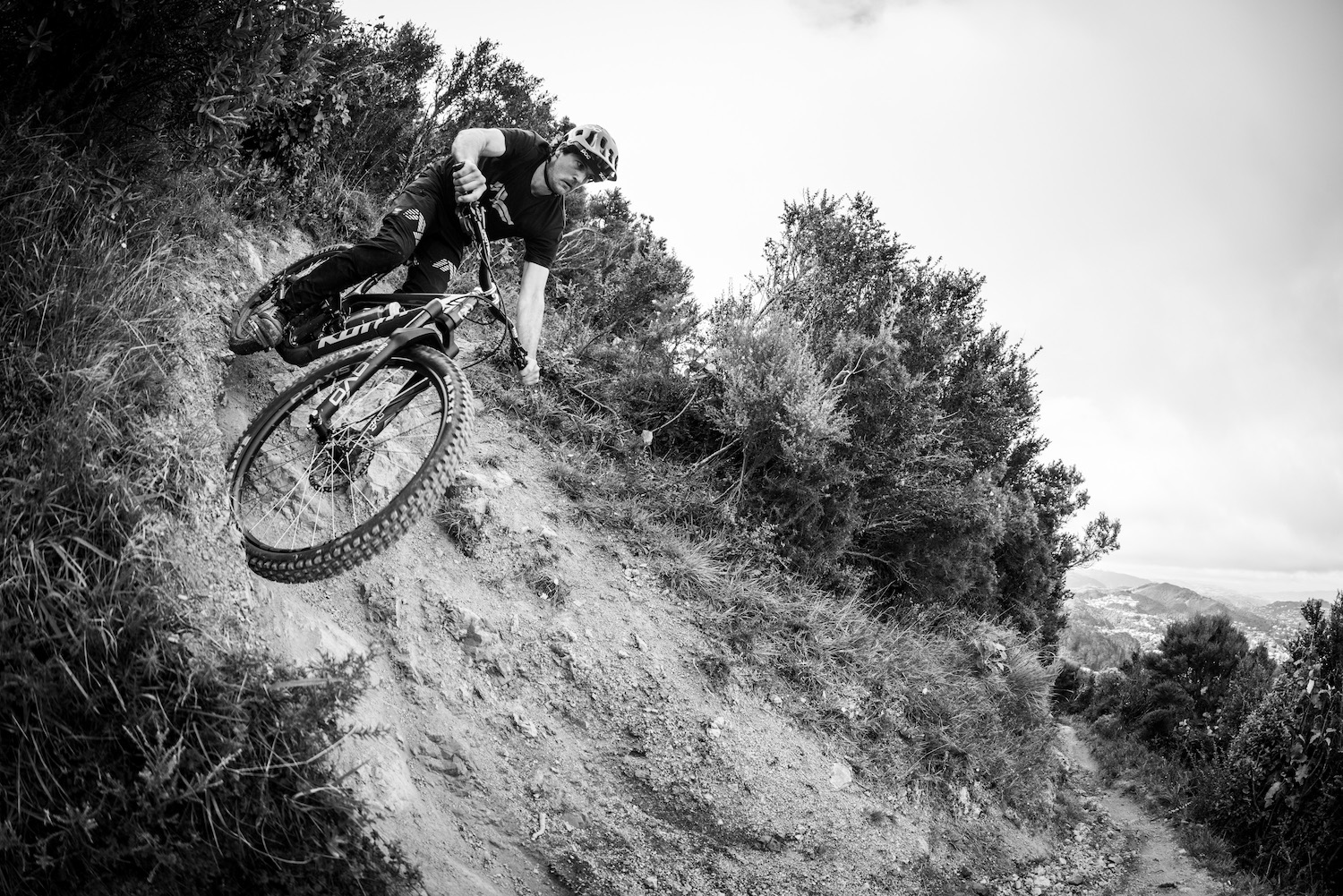
So, what does this mean? Well, on a trail as you are riding along the bigger wheel will be less likely to get knocked offline. This feeling can be felt when you jump from a 27.5-wheel bike to a 29er in a big sweeping turn. You feel like you are on rails due to the extra stability you get. Now the downside to this is that when you ride a 29er you have to put more effort into leaning the bike over, it’s a bit harder to move around but once it is lent over it is more stable in that position than a bike with smaller wheels. A 29er will track and carry speed better through a section of track, imagine riding a track and hitting a greasy rock garden, if you hit that greasy horrible bit of trail straight on the 29er will be less likely to get knocked offline and will be carrying more forward momentum.
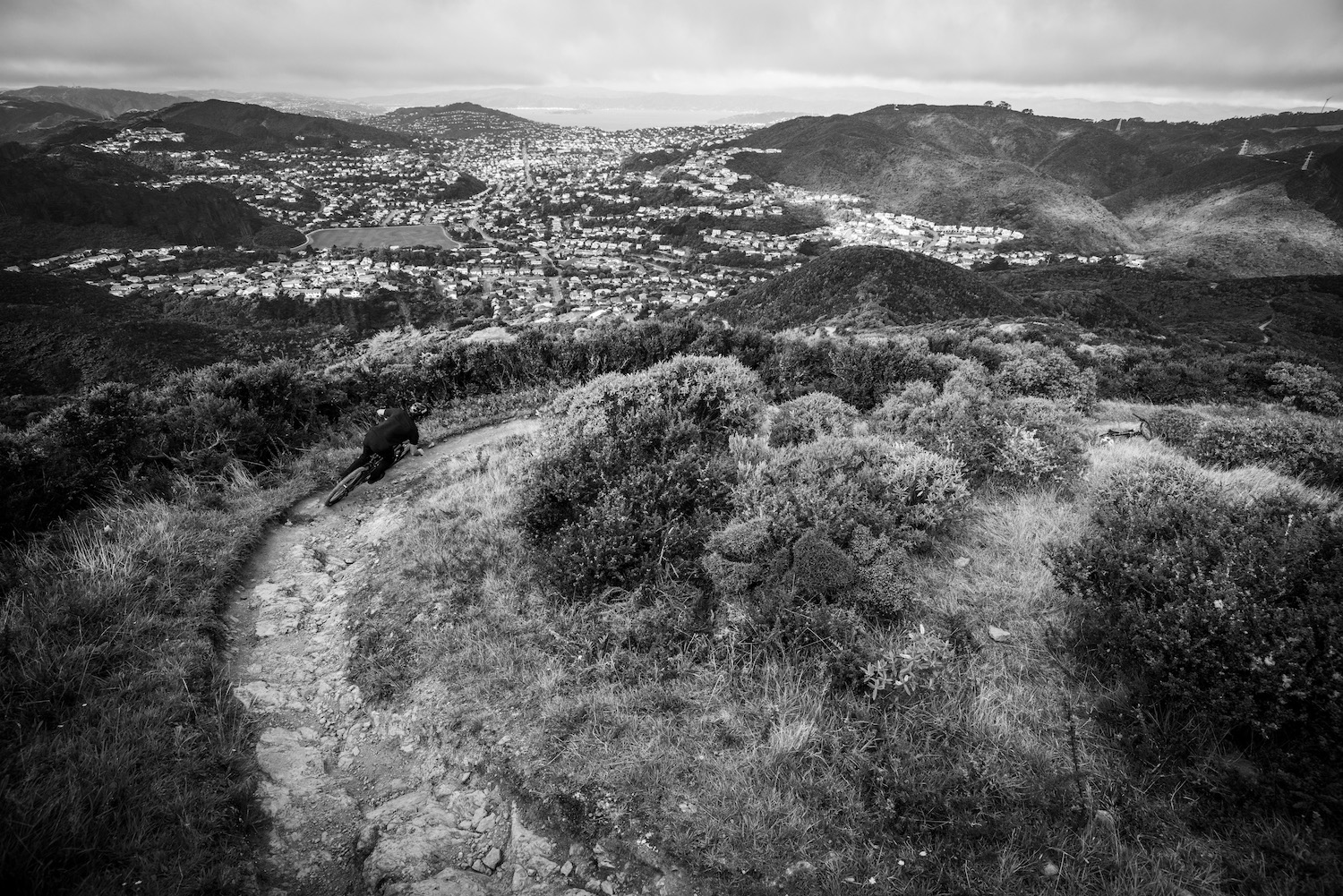
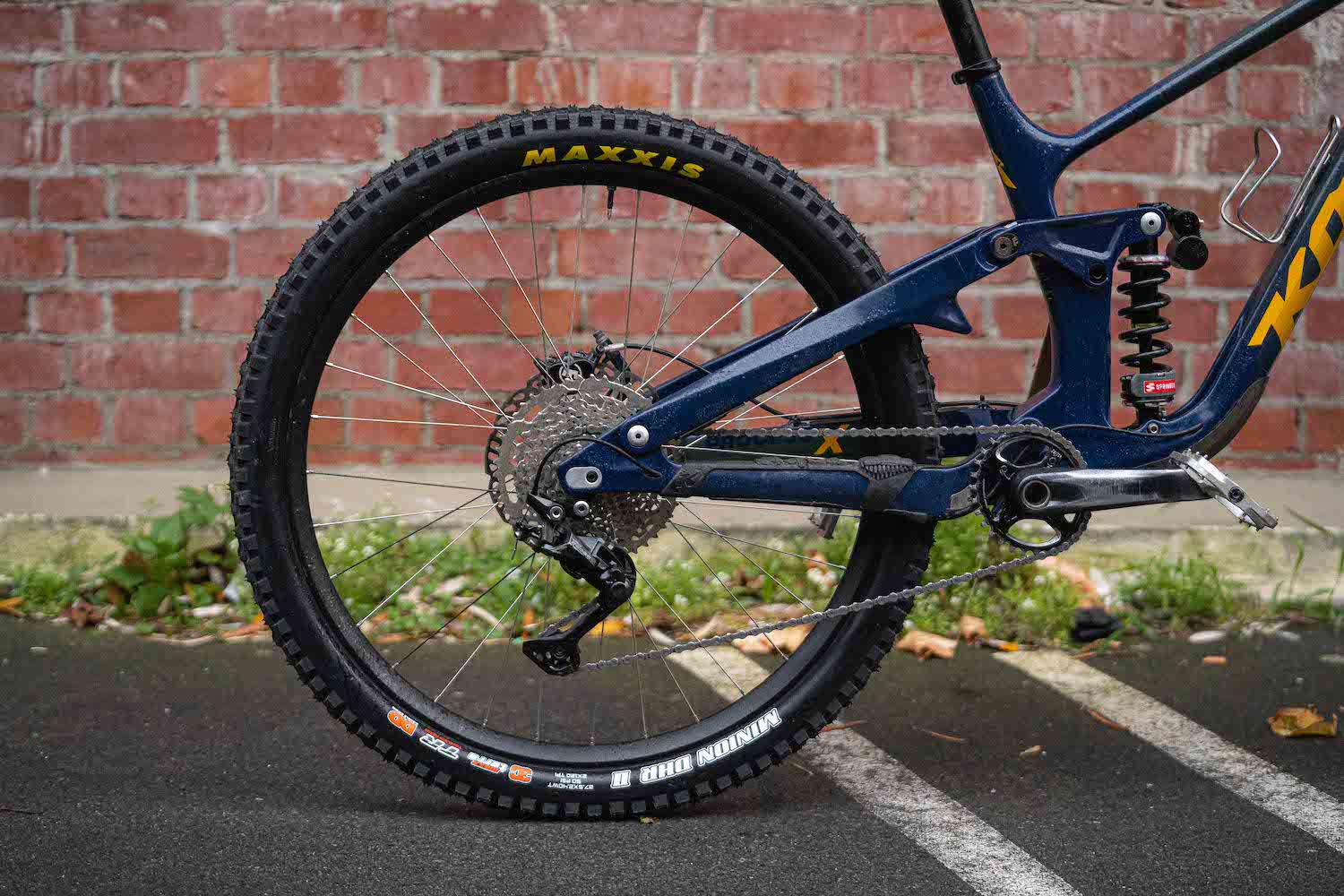
So why would you go mullet then? Well for me I wanted to decrease the stability of my bike to enable me to lean the bike over easier for turning. I want to make it easier to get my bike leaned over to help get round the super tight niggly narrow trails in Wellington. By using a smaller wheel, you reduce the amount of gyroscopic stability making it easier to get the bike leaned over.
If you want an extreme example of this, think about doing a scandi into a really tight turn. Often you will see rider scandi into really tight turns to help them get round it. It’s a great feeling when you get it right and it looks pretty damn cool. But how does it work? How can skidding the back of your bike the opposite way to the turn help you get round it. Well, when you lock the back wheel, the wheel loses its natural ability to stay up right/on its plane. It wants to fall over. Due to this effect, it becomes easier to lean the bike into the turn, The bike wants to fall to the direction you are turning. This falling/lean helps you turn the bike round the super tight turn. So due to the 27 having less gyroscopic stability it will be able to lean over easier, this making it easier to get round tighter turns.
So, what about it feeling like I went down 2 teeth on the front chainring. Well, this is because the moment of inertia is less on the 27 wheels. The moment of Inertia describes how much force or torque it takes to accelerate or stop the wheels. It’s worth noting that the influence of the radius (i.e., half the wheel diameter) is not linear but square. If the radius doubles, the moment of inertia quadruples. In real life this means it takes more force to accelerate and decelerate a 29er wheel than 27. I find it’s more noticeable when you are pedaling rather than when you are descending, although you might be able to get a better pump out of a 27.5-inch wheel as well.
Another thing that many don’t really consider with mullets is that your axle heights are different. The height from the center of the front axle to the ground will be higher than the height of the rear. Now I’m not 100% sure on this but in my head, this should mean it should feel more confidence-inspiring on the way down due to the front axle being higher than the rear. It might let you dive the front wheel a little more through the bottom bracket. In theory, this should give you more confidence when the bike is pointed down. Again not 100% sure on this but I think there is some clout to it. Here are some drawings Erica drew up for me to show you what I mean
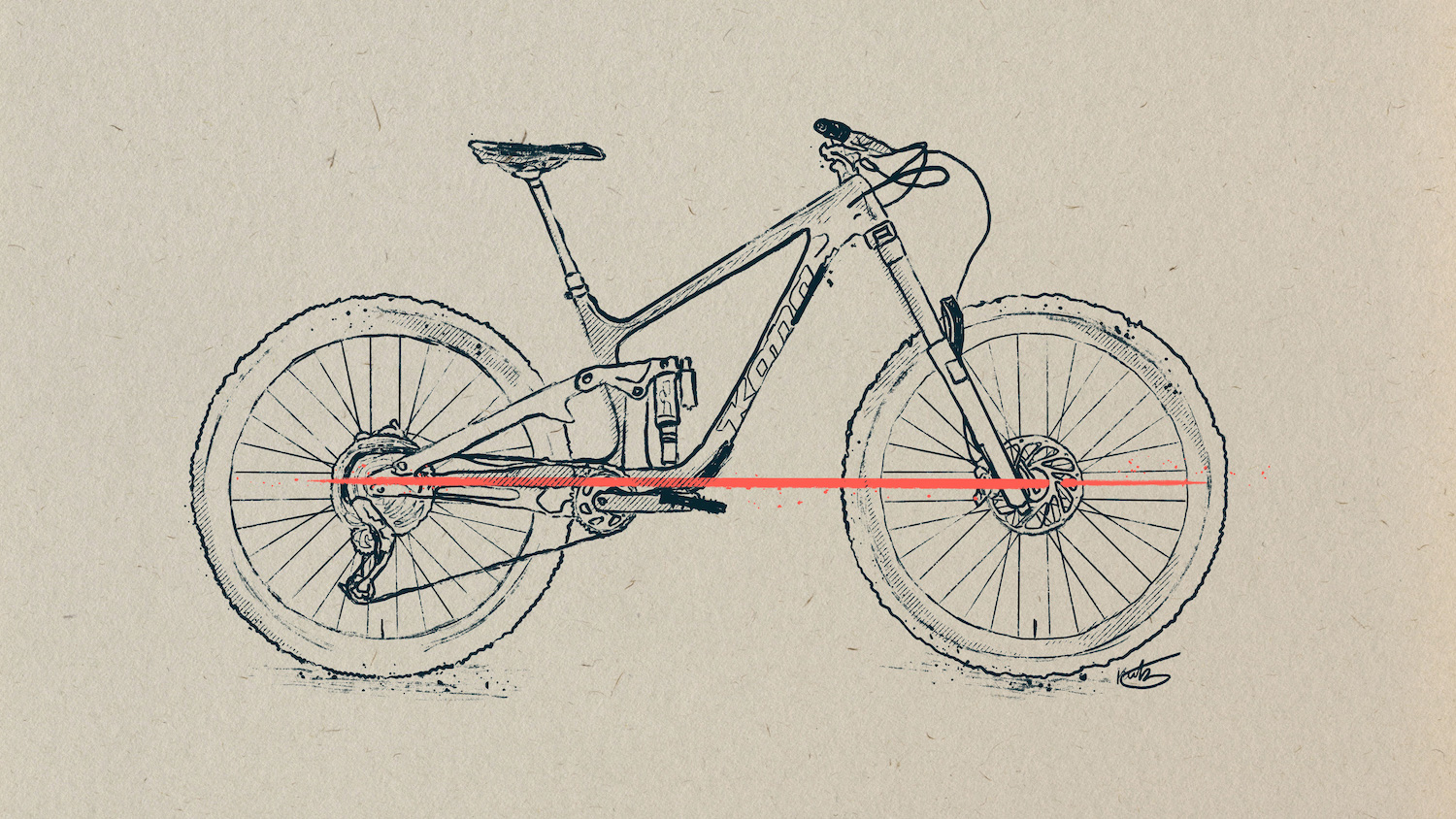
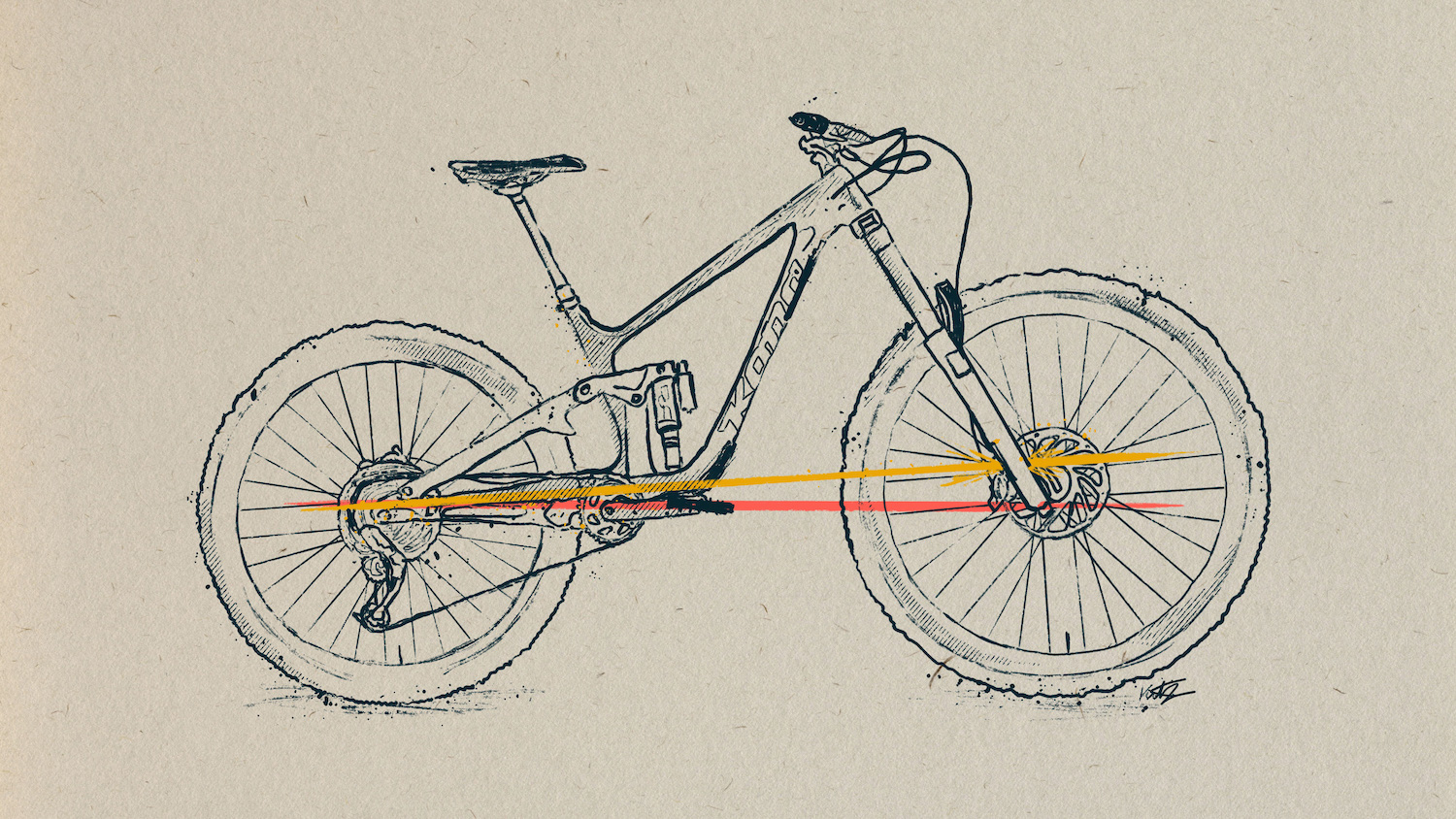
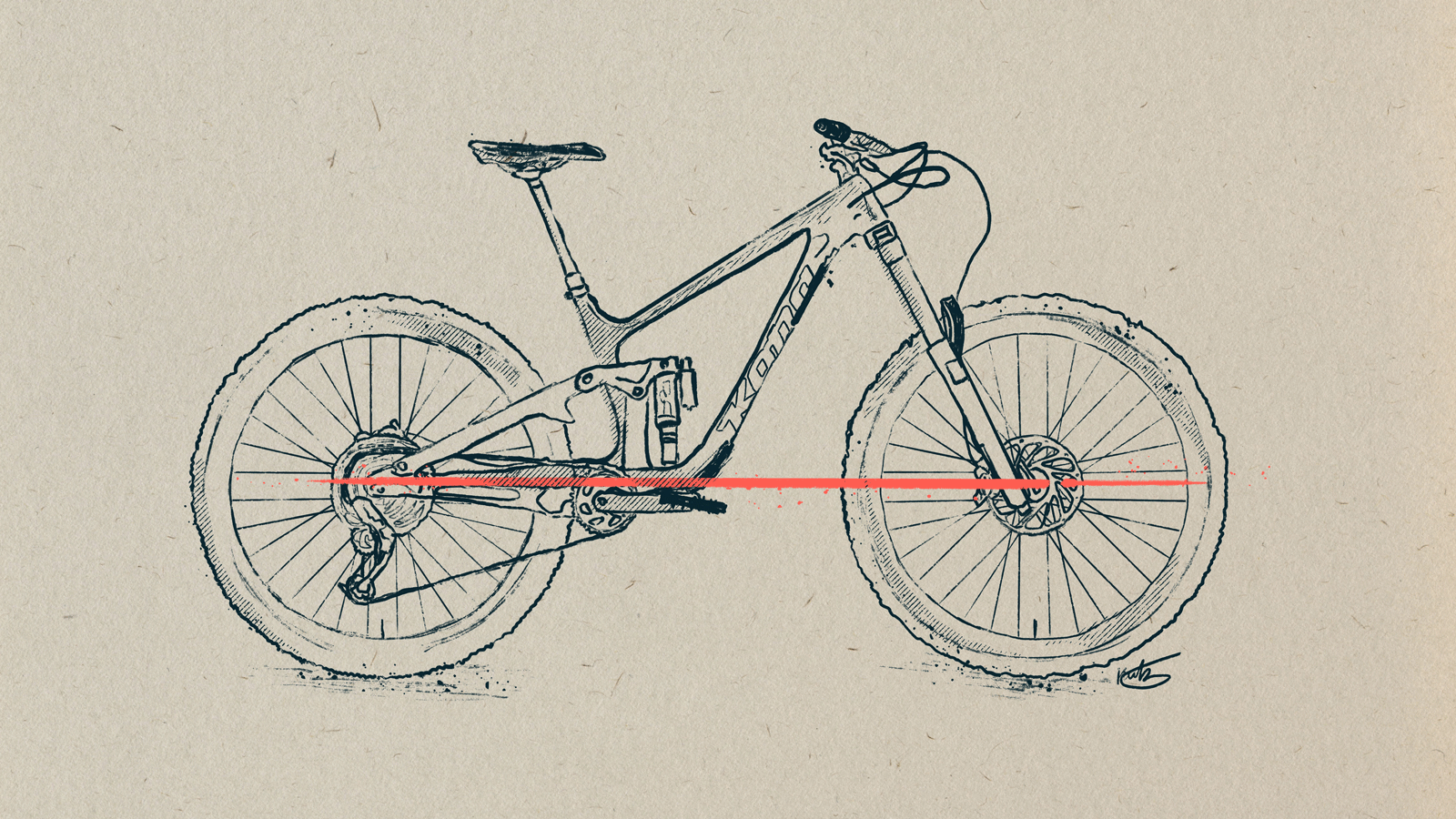
There is also the bigger contact patch that a 29er provides but in all fairness the marketing teams have made you believe it’s far bigger than it actually is. In reality, using the same tire, the same model of wheel, and the same pressure you’ll find out that the difference is only about 2 or 3 % bigger. Your tire pressure will have a far bigger impact on the contact patch.
By running the bike as a mullet, you still get kind of a bit of both worlds. 29er wheel upfront will prove better stability than the rear. You get that playful nimbler nature of the smaller wheel with the confidence a 29er wheel gives you upfront. You have the big stable front wheel that steers and tracks though and the smaller rear that can be moved around. The rear will just follow the front at the end of the day.
It’s it the magic bullet then? No. Is one better than the other? No. They both have their pluses and minuses. Personally, I’m loving my bike set up in biggie smalls mode. It’s taken me a while to get the X in a place where I love it for Wellington but now, I do. It’s such a good bike. It shines in places it probably shouldn’t and makes you feel invincible in places it should. I’m really feeling at one with it. My favorite thing is the way it carves turns. Such a great feeling. If I was to move somewhere it was a bit faster and open, I would consider going back to 29 just for the extra stability and confidence. But the great thing about the X is you can do both. All you need is a spare wheel and tire. (And maybe insert).
I would recommend playing with it. The bike is awesome in both modes but for now, I’m a biggie smalls guy.

